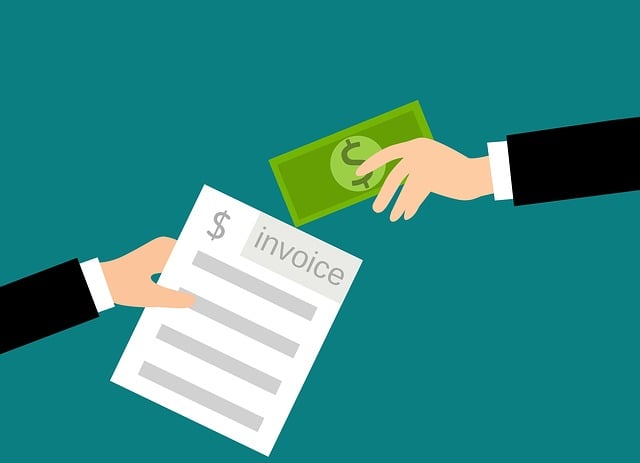SMEs can boost their financial flexibility with spot factoring, a flexible method that provides swift access to funds by selling outstanding invoices at a discount. The choose factoring approach allows businesses to select specific receivables for factoring, offering immediate capital for growth initiatives like inventory expansion or marketing campaigns. By negotiating rates and terms based on industry standards, companies gain control over their cash flow and align funding with unique objectives. Regular review of factoring arrangements ensures the strategy remains effective as business needs evolve.
“Unleash your business’s financial potential with spot factoring, a powerful tool for selective cash access. This comprehensive guide navigates the intricacies of this innovative financing strategy, offering insights into its benefits and real-world applications. We’ll explore how understanding spot factoring can empower businesses to make informed decisions when choosing the right factoring approach. From the basics to advanced strategies, this article provides a step-by-step process, helping you optimize your cash flow management.”
- Understanding Spot Factoring: A Brief Overview
- Selective Cash Access: Benefits and Use Cases
- Choosing the Right Factoring Approach for Your Business
- How Spot Factoring Works: Step-by-Step Process
- Implementing and Optimizing Your Selective Cash Flow Strategy
Understanding Spot Factoring: A Brief Overview

Spot factoring is a financial tool that offers businesses a flexible way to manage their cash flow by providing immediate access to funds tied to outstanding invoices or accounts receivable. It’s a choose factoring approach where companies sell their invoices at a discount to a third-party factor, receiving cash promptly. This method is particularly beneficial for small and medium-sized enterprises (SMEs) looking to bridge short-term liquidity gaps or fund growth initiatives without traditional bank loans.
Unlike other financing options that may have rigid terms and long application processes, spot factoring is designed to be swift and simple. Businesses can access funds within 24 hours of invoice submission, making it an attractive solution for urgent cash needs. It also provides businesses with the freedom to choose their factor, negotiating rates and terms based on their specific requirements and industry standards.
Selective Cash Access: Benefits and Use Cases

Selective Cash Access (SCA) offers businesses a flexible and strategic way to manage their cash flow, providing them with a powerful tool for financial planning and decision-making. By adopting this approach, companies can strategically choose which receivables to factor, allowing for targeted and immediate capital infusion into specific operations or projects. This selectivity empowers business owners to align funding with their unique needs, be it expanding inventory, investing in marketing campaigns, or covering unexpected expenses.
SCA’s benefits extend beyond financial support; it also provides an opportunity for improved cash management. Factoring specific receivables enables businesses to better predict and control their cash inflows, enhancing overall financial stability. This choose factoring approach can be particularly advantageous for small and medium-sized enterprises (SMEs) looking to navigate market fluctuations, seize growth opportunities, or simply ensure they have the capital on hand when needed most.
Choosing the Right Factoring Approach for Your Business

Selecting the optimal factoring method is a strategic move for businesses aiming for flexible cash flow management. The choice of a factoring approach depends on various factors unique to your business, including its industry, financial requirements, and growth stage. For instance, some approaches are more suitable for small businesses with immediate cash needs, offering quicker funding but potentially higher rates. Conversely, complex industries may benefit from customized factoring solutions that cater to their specific transactions and provide longer-term strategic advantages.
Understanding your business’s cash flow patterns and future projections is key. If consistent, predictable, and substantial, these can guide decisions towards more cost-effective options. Regularly reviewing factoring arrangements is also essential, as market conditions and business needs evolve. This proactive approach ensures you stay aligned with the most advantageous factoring strategy, enhancing financial stability and growth prospects.
How Spot Factoring Works: Step-by-Step Process

Spot factoring is a financial strategy that enables businesses to access cash flow in real-time by selling accounts receivable at a discount. Here’s how it works, step by step:
1. Choose Factoring Approach: Businesses first select the specific factoring method that aligns with their needs. This could be full factoring, where all accounts receivable are sold, or partial factoring, where only a portion is monetized. Each approach offers different benefits depending on cash flow requirements and business goals.
2. Sell Accounts Receivable: Once the factoring method is chosen, companies sell their eligible invoices to a factor (a financial institution). These invoices represent money owed by customers for goods or services already delivered. The factor evaluates the risk associated with these receivables and offers a discount on the face value of the invoices, less any agreed-upon fees. This instant cash injection provides businesses with immediate access to capital.
Implementing and Optimizing Your Selective Cash Flow Strategy

Implementing a selective cash access strategy through spot factoring can significantly enhance your business’s financial flexibility. The first step is to assess your cash flow needs and identify which receivables to factor. This involves understanding your business cycle, peak demand periods, and the average time it takes for customers to settle invoices. By selecting the right factoring approach, you can ensure a customized solution that aligns with your specific cash management goals.
Optimizing this strategy requires regular monitoring of your accounts receivable and market conditions. Regularly review your factoring terms, negotiate better rates if possible, and consider expanding or contracting your factor based on changing business needs. The goal is to maintain a healthy cash flow while minimizing the costs associated with factoring, ultimately allowing for strategic financial decisions and sustainable growth.
